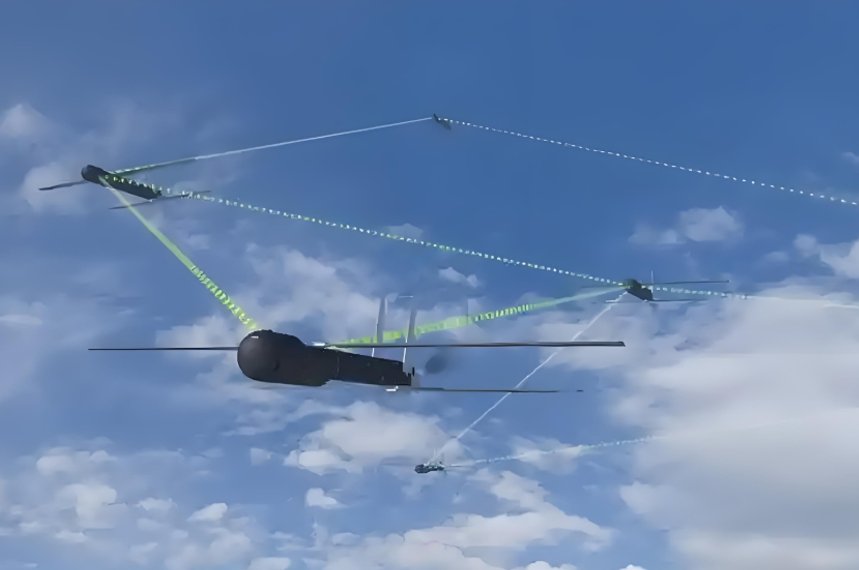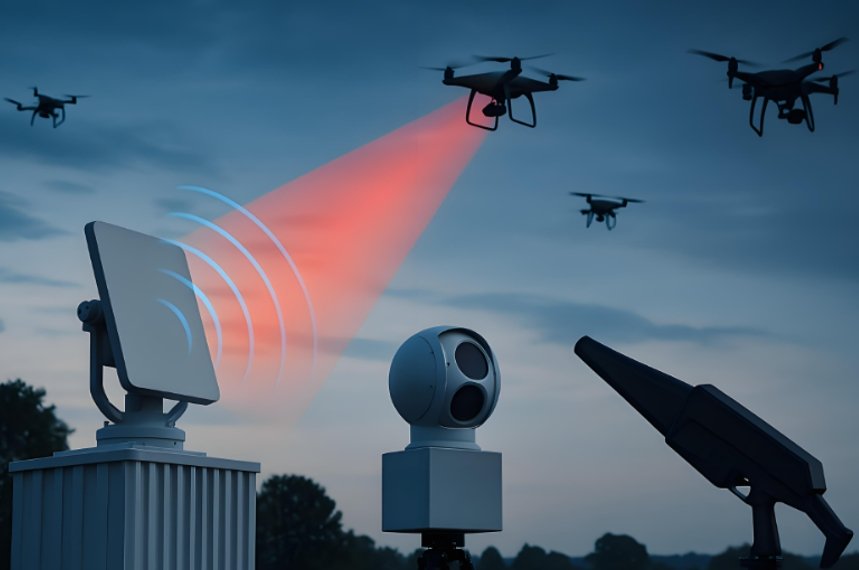
أهلاً وسهلاً بك! افتح عرضك الأول هنا

أهلاً وسهلاً بك! افتح عرضك الأول هنا

أهلاً وسهلاً بك! افتح عرضك الأول هنا
الشركة الصينية الرائدة في مجال تصنيع أجهزة التشويش المضادة للطائرات بدون طيار

Drones are changing everything—from how we film events to how we fight wars. But as their numbers grow, so do the risks. I’ve worked in defense tech long enough to see this shift happen in real time. Whether it’s a protest in a city center or a no-fly zone near a military base, the challenge is the same: how do we safely, quickly, and legally stop rogue drones?

Two of the most common answers are RF signal jamming and GPS spoofing. I’ve tested both in real-world situations, from open-air stadiums to mock military bases. In this article, I want to explain how each method works, where it fits best, and what their strengths and weaknesses are. If you’re in charge of security or defense planning, you need to understand these tools—not just the tech, but the risks and costs too.
RF jamming is a brute-force method. It floods the air with noise across the same frequencies drones use to communicate—usually 2.4GHz or 5.8GHz. When done right, the drone loses its link to the controller and either hovers, lands, or flies back home.

I’ve used handheld jammers that work instantly. The moment we activate them, commercial drones freeze midair or crash land within seconds. But there are limits. Drones with frequency-hopping tech or autonomous modes often resist jamming. Plus, the noise affects other devices nearby—Wi-Fi, Bluetooth, even emergency radios. That’s a major legal and technical concern, especially in cities.
| Feature | Details |
|---|---|
| Principle | Overloads RF band with noise |
| Main Targets | Consumer drones with RF links |
| Range (typical) | 1–2 km in urban, 3–5 km in open fields |
| Response Speed | Immediate |
| Side Effects | Affects nearby wireless systems |
| Deployment | Simple handheld or mounted units |
| Cost | Medium (hundreds to thousands of dollars) |
How Does GPS Spoofing Mislead Drones?
GPS spoofing is quieter. Instead of cutting off the drone, it fools it. The attacker sends fake GPS signals that overpower the real satellite signals. The drone “believes” it’s somewhere else, so it follows the wrong path or lands where you want it to.

This method is precise but hard to pull off. It needs specialized software-defined radios and exact timing to mimic satellite signals. In one test we ran, we tricked a drone into flying away from a secure facility and landing in a “safe zone” 800 meters away. No jamming, no alarms—just surgical misdirection.
| Feature | Details |
|---|---|
| Principle | Sends stronger fake GPS signals |
| Main Targets | Drones relying on GNSS navigation |
| Range (typical) | 2–3 km, can extend with high-gain antennas |
| Response Speed | Delayed by a few seconds |
| Side Effects | May affect GPS on phones, vehicles |
| Deployment | Complex—needs calibration and synchronization |
| Cost | High (tens of thousands to millions) |
Which Technology Works Best for Different Situations?
I’ve worked in enough locations to know there’s no universal answer. Each site, event, and mission requires a different approach. Here’s how I usually decide what to use:

Strengths and Limitations Compared
| Feature | RF Signal Jamming | GPS Spoofing |
|---|---|---|
| Direct Control | Yes (cuts command) | No (redirects flight path) |
| Reliability | High vs. simple drones | High vs. GPS-reliant drones |
| Legal Restrictions | Very high | Extremely high |
| Impact Radius | Wide (unintentional disruption) | Narrow (focused spoofing area) |
| Counter-Resistance | Weak against autonomous drones | Weak against encrypted GPS |
What’s Next in Tech?
RF jamming is getting more precise. We now use AI to learn the drone’s signals and adapt interference on the fly. I’ve seen phased-array antennas track a drone and jam it directionally, like a spotlight of RF power.

GPS spoofing is becoming multi-layered. Some systems can fake GPS, GLONASS, and BeiDou all at once. In labs, we’re experimenting with “cooperative spoofing,” which starts with soft jamming, then eases the drone into a fake GPS zone.
Cost Breakdown
| Cost Category | RF Signal Jamming | GPS Spoofing |
|---|---|---|
| Equipment | $500–$50,000 | $10,000–$1M+ |
| Operating Cost | Moderate (battery or AC) | Low (battery-powered in field) |
| Maintenance | Frequent (amplifiers, wear) | Rare (atomic clocks last long) |
| Deployment Time | < 10 minutes | 30–60 minutes (signal calibration) |
Final Thoughts
I’ve been on rooftops, in bunkers, and behind screens using both of these technologies. What I’ve learned is simple—use the tool that fits the situation. Neither jamming nor spoofing is perfect. Jamming is fast but messy. Spoofing is clean but slow.
In my experience, the best defense is layered. I recommend starting with radar and RF scanners. Use AI to figure out what kind of drone you’re dealing with. Then act—jam if it’s safe, spoof if it’s stealth. Some new systems even switch between the two automatically.

No matter what you choose, follow the law. These tools are powerful, and misusing them can affect people, systems, or even aircraft. I’ve seen cases where careless jamming took down nearby networks. You don’t want that.
If you’re planning to deploy anti-drone systems, start by mapping your environment. What types of drones are common? How fast do you need to react? Are there civilians nearby?
Answering those questions helps you decide not just which tech to use—but how to use it responsibly.